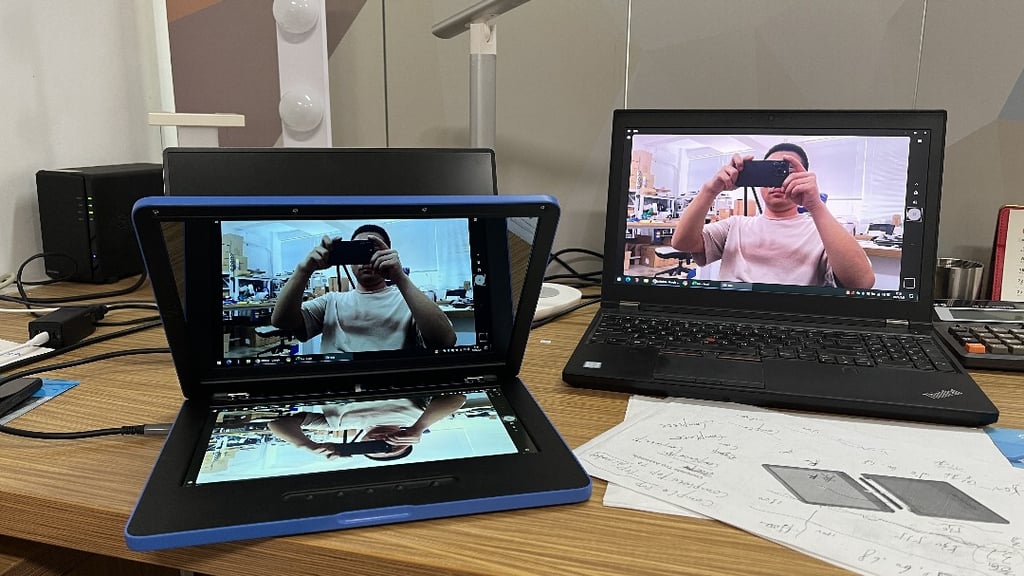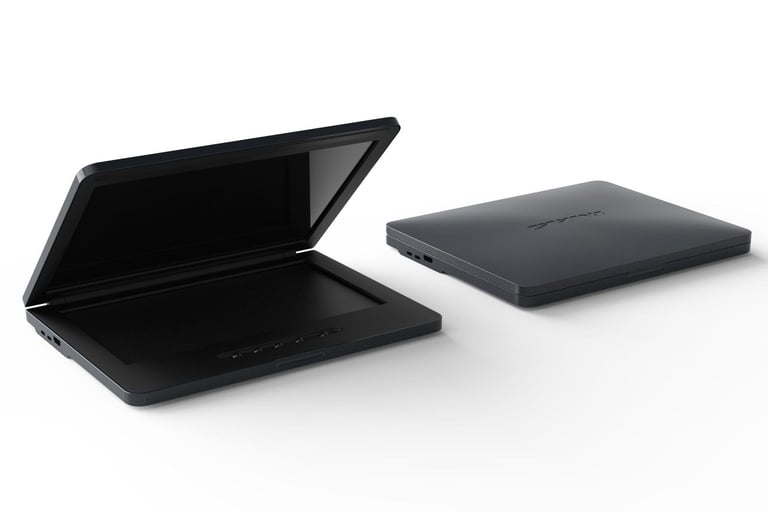Case Study: How Idea Reality Leveraged Injection Molding to Bring StudioBox to Life
You’ve got a brilliant idea for a product that could change how people connect in a hybrid world. The sketches are done, the prototypes are promising, and the buzz is building. Then reality hits—demand skyrockets, and your small-batch production can’t keep up.
2/23/20256 min read


Imagine this: you’ve got a brilliant idea for a product that could change how people connect in a hybrid world. The sketches are done, the prototypes are promising, and the buzz is building. Then reality hits—demand skyrockets, and your small-batch production can’t keep up. That’s exactly where Idea Reality found themselves with StudioBox, their game-changing videoconferencing solution. What pulled them out of the chaos and into success? Injection molding.
If you’re a designer or decision-maker in electronics development, you’ve probably wrestled with the same questions Idea Reality faced: How do you scale without breaking the bank? How do you keep quality sky-high when timelines shrink? This isn’t just a story about plastic parts—it’s about turning a bold vision into a tangible win. Let’s dive into how Idea Reality made it happen, and what you can steal from their playbook.
The Spark: Idea Reality and the StudioBox Challenge
Idea Reality isn’t a household name—yet. They’re a scrappy, mid-sized outfit with a knack for spotting gaps in the market. StudioBox was their big swing: a sleek, all-in-one videoconferencing hub designed to make remote meetings feel less like a chore and more like a conversation. Think high-def cameras, crystal-clear audio, and a minimalist design that screams “put me on your desk.” It launched at the perfect time—2023, when hybrid work was no longer a trend but a fixture. Early reviews were glowing, Kickstarter backers were ecstatic, and orders started pouring in.
But here’s the rub: Idea Reality wasn’t ready for the deluge. Their initial setup relied on 3D printing for prototypes and small runs—great for tweaking designs, terrible for scale. Each StudioBox shell took hours to print, and costs were creeping up faster than a toddler with a marker. Customers loved the product, but delays were piling up, and competitors were sniffing around. The team needed a way to crank out thousands of units—fast, affordable, and flawless. Enter injection molding.
Why Injection Molding? The Lightbulb Moment
If you’ve never seen injection molding in action, picture this: molten plastic gets shot into a precision-crafted mold, cools in seconds, and pops out as a perfect part. It’s like a superpower for mass production—speedy, repeatable, and versatile. For Idea Reality, it wasn’t just an option; it became the option. But the decision didn’t come overnight.
The team huddled up—designers, engineers, and the CFO who kept muttering about budgets. They’d been burned before by high upfront costs, so skepticism was thick. But the numbers told a different story. Compared to 3D printing or CNC machining, injection molding slashed per-unit costs once you hit volume. StudioBox needed intricate parts—curved camera housings, snap-fit speaker grilles, cable management slots—all tricky to machine but a breeze to mold. Plus, they could use tough, lightweight plastics like ABS or polycarbonate, perfect for a product that’d get shipped worldwide and handled daily.
The tipping point? Speed. A single 3D-printed shell took 4 hours; injection molding could churn out 100 in that time once the mold was ready. The upfront tooling cost—around $15,000 for a steel mold—stung, but they crunched the numbers: at 10,000 units, they’d break even and start saving big. For a company staring down a 20,000-unit backlog, it was a no-brainer. “We realized we weren’t just making parts,” said lead designer Mia Torres. “We were building our future.”
Eventually Idea Reality partntered closely with Peakingtech and cut the mold cost to $10,000!
Getting It Done: From Sketch to Production Line
Turning StudioBox into an injection-molded reality wasn’t a straight line—it was more like a dance with a few stumbles. First came the design tweaks. Mia and her team had to rethink their CAD files. Those sharp corners that looked cool on screen? They’d trap plastic in the mold. Undercuts? A nightmare for ejection. They added draft angles—slight tapers so parts slid out easily—and slimmed down walls to cut material use without losing strength. “It was humbling,” Mia admitted. “You fall in love with your design, then engineering slaps you with reality.”
Next up: the mold. Idea Reality partnered with a local shop that specialized in high-precision tooling. The steel mold took three weeks to craft, with every curve and cavity machined to match StudioBox’s specs. “Seeing that mold was like holding our baby for the first time,” joked production lead Sam Carter. “Expensive baby, though.” They ran test shots, tweaking pressure and cooling times until the parts came out pristine—no warping, no sink marks, just smooth, glossy shells ready for assembly.
Production kicked off in earnest. The facility they chose could pump out 500 units a day, and Idea Reality hit that pace within a week. Each cycle took 30 seconds: plastic in, part out, repeat. Sam remembers the first big run: “The machine hummed, the stack grew, and we just grinned like idiots. It was magic.” They churned out 10,000 StudioBox shells in under a month—enough to clear the backlog and start filling new orders.
The Payoff: Numbers Don’t Lie
So, did it work? Let’s break it down.
Production Speed: From 4 hours per unit with 3D printing to 500 units a day. That’s a 60% drop in total manufacturing time, even counting setup. Backlogs vanished, and customers stopped grumbling.
Cost Savings: Per-unit costs fell from $12 to $7—a 40% cut. At scale, that’s real money—$50,000 saved on the first 10,000 units alone, more than offsetting the mold.
Quality: Injection molding delivered. Only 1% of parts had defects (think tiny flash lines), easily buffed out. StudioBox felt solid—drop tests proved it—and customers noticed. Returns dropped by half.
Growth: With production humming, Idea Reality shipped 25,000 units in six months, doubling their revenue. They even launched a StudioBox Mini, reusing the same process for a smaller mold. “We went from scrambling to dreaming bigger,” said CFO Priya Patel.
The human impact was just as real. Mia’s team could focus on designing new features instead of babysitting printers. Sam’s crew traded late-night shifts for steady days. And customers? They raved on X about StudioBox’s polish—“like Apple made a Zoom machine,” one post gushed. For a small team, that felt like a Grammy.


Lessons You Can Take Home
Idea Reality’s story isn’t unique—well, except for the part where they nailed it. If you’re in electronics development, here’s what their win can teach you:
Scale Smart: Injection molding isn’t for one-offs; it’s for when demand hits critical mass. If your product’s gaining traction, start planning the jump early.
Invest Upfront: That $15,000 mold sounds steep until you’re saving $5 a unit. Run the numbers—long-term wins beat short-term comfort.
Team Up: Designers and engineers need to sync up. Mia’s crew learned that the hard way; save yourself the headache and get them talking from day one.
Think Big: StudioBox didn’t stop at one model. Once the process clicked, Idea Reality flexed it for more. What else could you build with the same setup?
This isn’t just for videoconferencing gear. Car dashboards, wearable tech, medical devices—anytime you need precision parts in bulk, injection molding’s your friend. “It’s like having a superpower you didn’t know you needed,” Sam said. He’s not wrong.
Wrapping It Up: From Vision to Victory
Idea Reality started with a sketch and a dream: make remote work feel human again. StudioBox could’ve stayed a niche hit, bottlenecked by slow production and rising costs. Instead, they leaned into injection molding and turned a challenge into a triumph. They’re not a giant—yet—but they’ve got the tools to play like one.
For you designers and deciders out there, this is more than a feel-good story. It’s a nudge. Maybe your next big thing is sitting on a drafting table, waiting for the right push. Injection molding might be it—fast, affordable, and built to scale. Idea Reality proved it works. What’s your StudioBox?
Got thoughts? Drop them below—I’d love to hear how you’re tackling production hurdles. Oh, and if you’re curious what StudioBox looks like in action, let me know—happy to sketch it out visually if you’re up for it!
